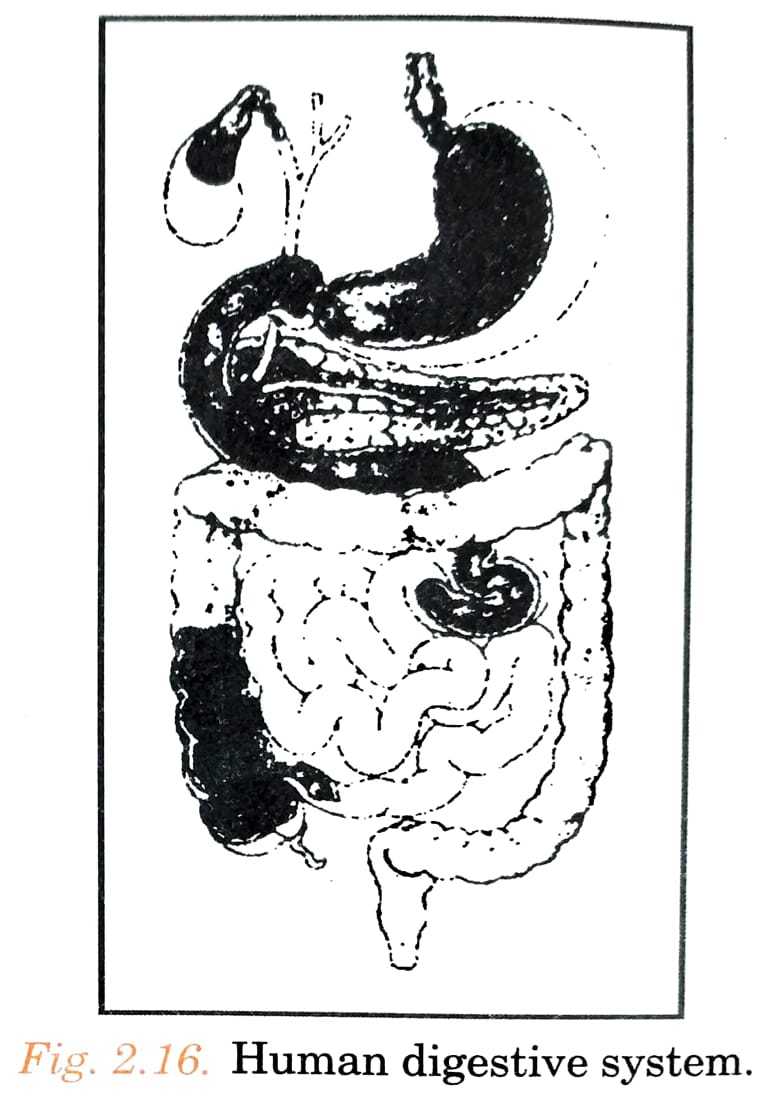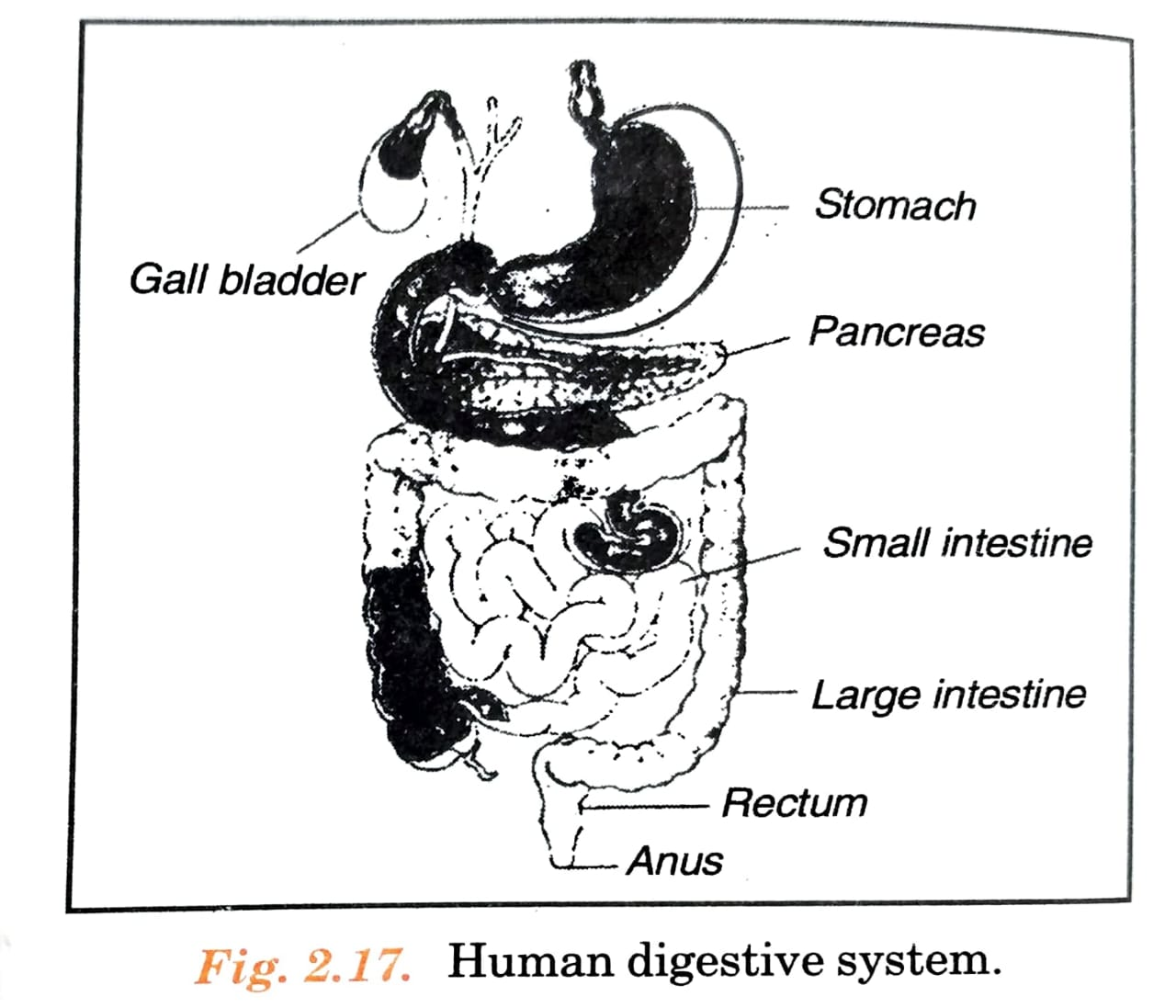SEBA Class 7 Science Chapter 2 Nutrition in Animals – Textbook Solutions & MCQ (Part I)
Get Class 7 Science Chapter 2 “Nutrition in Animals” Solutions for SEBA Assam (English Medium) students. This chapter, from Part I of the Science book, explains the different modes of nutrition in animals, the human digestive system, digestion in ruminants, and feeding mechanisms in amoeba. Our solutions provide detailed NCERT/SCERT textbook answers, important MCQs, and key explanations to help students understand the digestive process and its significance in living organisms. These solutions are structured to make learning easy and effective for exam preparation.
Class 7 Science
Chapter – 2 (Part I) Ospin Academy
Nutrition in Animals
EXERCISE
Q. 1. Fill in the blanks:
(a) The main steps of digestion in humans are __________ , __________ , __________ ,and __________.
Ans: Ingestion, digestion, absorption, assimilation,
(b) The largest gland in the human body is __________.
Ans: Liver.
(c) The stomach releases hydrochloric acid and __________ juices which act on food.
Ans: Digestive.
(d) The inner wall of the small intestine has many finger like out-growths called __________.
Ans: Villi.
(e) Amoeba digests its food in the __________ .
Ans: Food vacuole.
Q. 2. Mark T if the statement is True and ‘F” if it is False:
(a) Digestion of starch starts in the stomach.
Ans: False.
(b) The tongue helps in mixing food with saliva
Ans: True.
(d) The ruminants bring back swallowed grass into their mouth and chew it for some time.
Ans: False.
(e) The gall bladder temporarily stores bile.
Ans: True.
Q. 3. Tick (✔) mark the correct answer in each of the following:
(a) Fat is completely digested in the:
(i) stomach
(ii) mouth
(iii) small intestine
(iv) large intestine.
Ans: (a) (i) Small intestine.
(b) Water from the undigested food is absorbed mainly in the:
(i) stomach
(ii) food pipe
(iii) small intestine
(iv) large intestine.
Ans: (b) (iv) Large intestine.
Q. 4. Match the items of Column I with those given in Column II:
|
Column I Food Components |
Column II Product(s) of Digestion |
|---|---|
|
(i) Carbohydrates |
(a) Fatty acids and glycerol |
|
(ii) Proteins |
(b) Sugar |
|
(iii) Fats |
(c) Amino Acids |
Ans:
|
Column I Food Components |
Column II Product(s) of Digestion |
|---|---|
|
(i) Carbohydrates |
(b) Sugar |
|
(ii) Proteins |
(c) Amino Acids |
|
(iii) Fats |
(a) Fatty acids and glycerol |
Q. 5. What are villi ? What is their location and function ?
Ans: The finger like projections in the inner walls of the small intestine is called villi. These are found in small intestine.
Function: The villi decrease the surface area for absorption of the digested food.
Q. 6. Where is the bile produced? Which component of the food does it help to digest?
Ans: The liver secretes bile juice that is stored in a sac called the gall bladder. The bile plays an important role in the digestion of fats.
Q.7. Name the type of carbohydrate that can be digested by ruminants but not by humans. Give the reason also.
Ans: Cellulose is the carbohydrate that can be digested by ruminants. Ruminants have large sac like structure between the small intestine and large intestine. The cellulose of the food is digested by the action of certain bacteria which are not present in humans.
Q.8. Why do we get instant energy from glucose?
Ans: We get instant energy from glucose, because in the cells, glucose breaks down with the help of oxygen into carbon dioxide and water and energy is released.
Q.9. Which part of the digestive canal is involved in:
(i) absorption of food.
Ans: Small intestine.
(ii) chewing of food.
Ans: Buccal cavity.
(iii) killing of bacteria
Ans: Stomach.
(iv) complete digestion of food.
Ans: Small intestine.
(v) formation of feces.
Ans: Large intestine.
Q. 10. Write one similarity and one difference between the nutrition in amoeba and human beings.
Ans: Similarity: In both the cases digestive juices break down the complex food particles into simpler substances which can be absorbed.
Difference: Amoeba has no mouth and no digestive system whereas a human being has a mouth and a digestive system made up of many organs.
Q. 11. Match the items of column I with suitable items in column II:
|
Column – I |
Column – II |
|---|---|
|
(a) Salivary gland |
(i) Bile juice secretion |
|
(b) Stomach |
(ii) Storage of undigested food |
|
(c) Liver |
(iii) Saliva secretion |
|
(d) Rectum |
(iv) Acid release |
|
(e) Small intestine |
(v) Digestion is completed |
|
(f) Large intestine |
(vi) Absorption of water |
|
(vii) Release of faces |
Ans:
|
Column – I |
Column – II |
|---|---|
|
(a) Salivary gland |
(iii) Saliva secretion |
|
(b) Stomach |
(iv) Acid release |
|
(c) Liver |
(i) Bile juice secretion |
|
(d) Rectum |
(vii) Release of faces |
|
(e) Small intestine |
(v) Digestion is completed |
|
(f) Large intestine |
(vi) Absorption of water |
Q. 12. Label Fig 2.16 of the digestive system.

Ans.

Q. 13. Can we survive only on raw, leafy vegetables? Discuss.
Ans: We know that the animals, fungi, bacteria, non-green plants and human beings do not have the ability to make their own food. They depend upon the autotrophs for their food directly or indirectly. The green plants (leafy vegetables, grass) trap solar energy and make their own food in the form of glucose. So we can say that leafy vegetables and grass can provide sufficient energy to survive.
Q1: What are the different types of nutrition in animals?
Animals have holozoic, parasitic, and saprophytic nutrition. Most animals follow holozoic nutrition, where they ingest, digest, and absorb food.
Q2: How does the human digestive system work?
The human digestive system includes the mouth, esophagus, stomach, small intestine, large intestine, and accessory organs like the liver and pancreas. Food is broken down into simpler substances and absorbed into the bloodstream for energy.
Q3: What is the role of villi in the small intestine?
Villi are small finger-like projections that increase the surface area for nutrient absorption, allowing digested food to pass into the blood efficiently.
Q4: Where can I find Class 7 Science Chapter 2 solutions for SEBA Assam?
You can find detailed textbook solutions, MCQs, and explanations for SEBA Assam Class 7 Science Chapter 2 on this page.
Q5: Where can I find solutions for all Class 7 Science chapters?
To get solutions for all Class 7 Science chapters, Click Here

